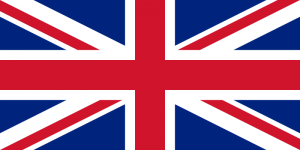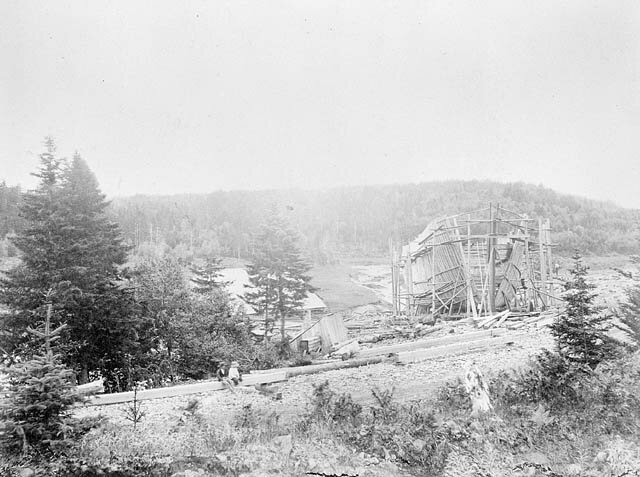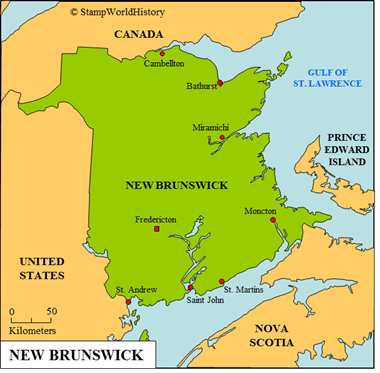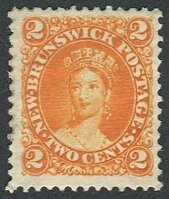
New Brunswick
Quick reference
General issues: British colony/Self government 1851-1868
Country name on general issues: New Brunswick
Currency: 1 Shilling = 12 Pence 1851-1860, 1 Dollar = 100 Cents 1860-1868
Population: 252 000 in 1861
Political history New Brunswick
Exploration and French rule
New Brunswick is located in North America as one of the Maritime Provinces of modern day Canada. Prior to colonization, New Brunswick was inhabited by three Amerindian peoples. The largest people were the Mi’kmaq or Micmac people – a people also found in the other Maritime Provinces. New Brunswick was, possibly, settled by the Norsemen around 1 000 AD. The first recorded European exploration dates from 1534, when the French explorer Jacques Cartier explored New Brunswick and claimed it for France. The French first settled New Brunswick in 1604 – French settlement would remain limited throughout the period of French rule. Under French rule, New Brunswick was part of the French colony of Acadia that roughly consisted of today’s Maritime Provinces.
British rule
French rule came to an end when the British occupied New Brunswick between 1755 and 1759 – New Brunswick was formally ceded to the British in 1763. The British first attached New Brunswick to the existing British colony of Nova Scotia. In 1784, New Brunswick was made a separate colony and, as such, gained self government in 1848. The border with the United States was defined in 1842. In 1867, New Brunswick was one of the founding provinces of the federal Dominion of Canada. New Brunswick has been a Canadian province since then.
Economy

A shipyard – in the 19th century New Brunswick – rich in timber – had a significant shipbuilding industry.
Economically, in the 19th century, forestry, fishing, mining and small scale farming were the most important activities. At the time, New Brunswick also had a significant shipbuilding industry – wooden ships. In the 20th century the economy diversified to include manufacturing and services. The federal government supports the New Brunswick economy – modern day New Brunswick has a per capita GDP that lies below the average for all of Canada.
Demography
The French population was largely expelled in 1755, when the British occupied New Brunswick – a significant number to return after 1763, when all French possessions, in what today constitutes Canada, were ceded to the British. After the War of Independence in the United States, a large number of British Loyalists[1]Known as the Loyalists since they had stayed loyal to Britain during the War of Independence. settled in New Brunswick in 1783. The influx of Loyalists was the reason to establish New Brunswick as a separate colony. In the 19th century the main flow of immigrants came from Ireland and Scotland. In today’s New Brunswick, 27% of the population identifies itself as French, 23% as English, 19% as Irish and 18% as Scottish. With its substantial French population, New Brunswick is the only officially bilingual province of Canada. The indigenous peoples account for 3.3% of the population.
Postal history New Brunswick
New Brunswick issued its first stamps in 1851. The first set issued shows the British Crown and the heraldic flowers of the constituent parts of Great Britain. The diamond shaped design is similar to that of the first stamps of Nova Scotia and Newfoundland – although Newfoundland issued its first stamps in a square shape. The stamps of this first issue are all in the very high catalog value range.
A second set was issued after the change of currency to the dollar. The set consists of six different designs. Three of the designs show the portrait of Queen Victoria in different frames. The portrait used for these stamps is of the ‘Chalon Head’ type.[2]For more about the Chalon Heads, please refer to the profile of Nova Scotia. A further stamp shows the portrait of the young Prince of Wales[3]The future King Edward VII. . The last two stamps reflect aspects of modernization pertaining to New Brunswick, showing a locomotive and a steam and sailing ship – the first stamps to do so in the world. At the time, railways were constructed and the New Brunswick shipbuilding industry was at its height. The issues of this second set are more affordable and range in the mid to high catalog values. The stamps of New Brunswick were superseded by the issues of the Dominion of Canada in 1868.
A curious episode in postal history of New Brunswick involves a 1860 issue – on the initiative of the postmaster of New Brunswick. The postmaster had stamps printed by the American Bank Note Company in New York – showing his own portrait. However, the colonial authorities prevented the stamps from being issued. All but fifty were destroyed – these last fifty now being sought after and in the very high catalog value range.
Album pages
← Previous page: Canadian Provinces - CanadaNext page: Canadian Provinces - Newfoundland →



